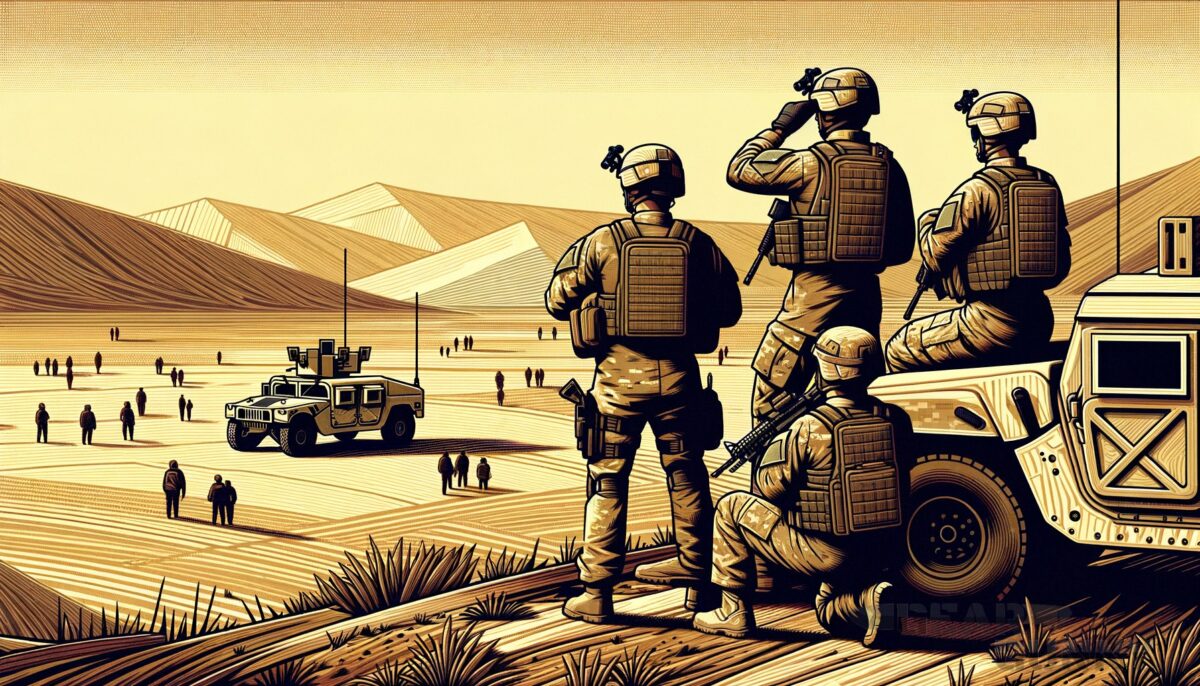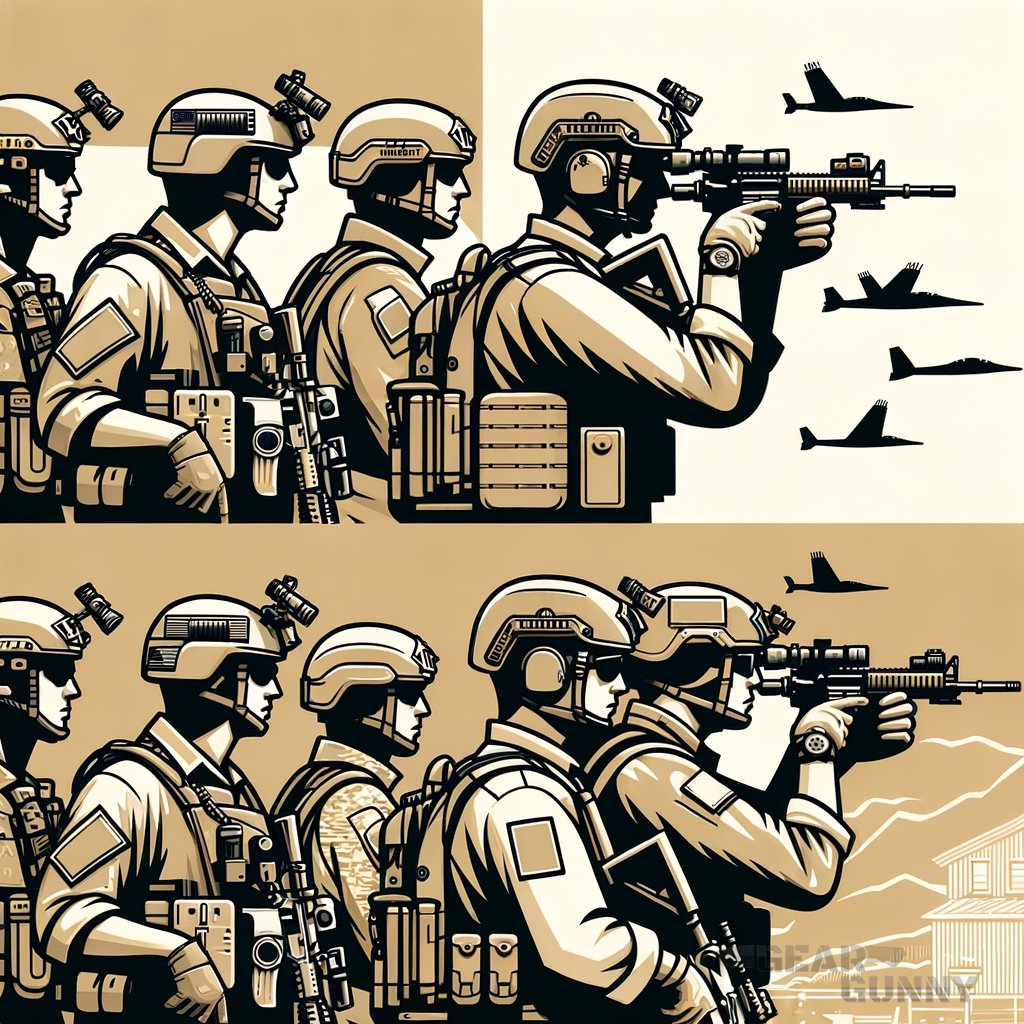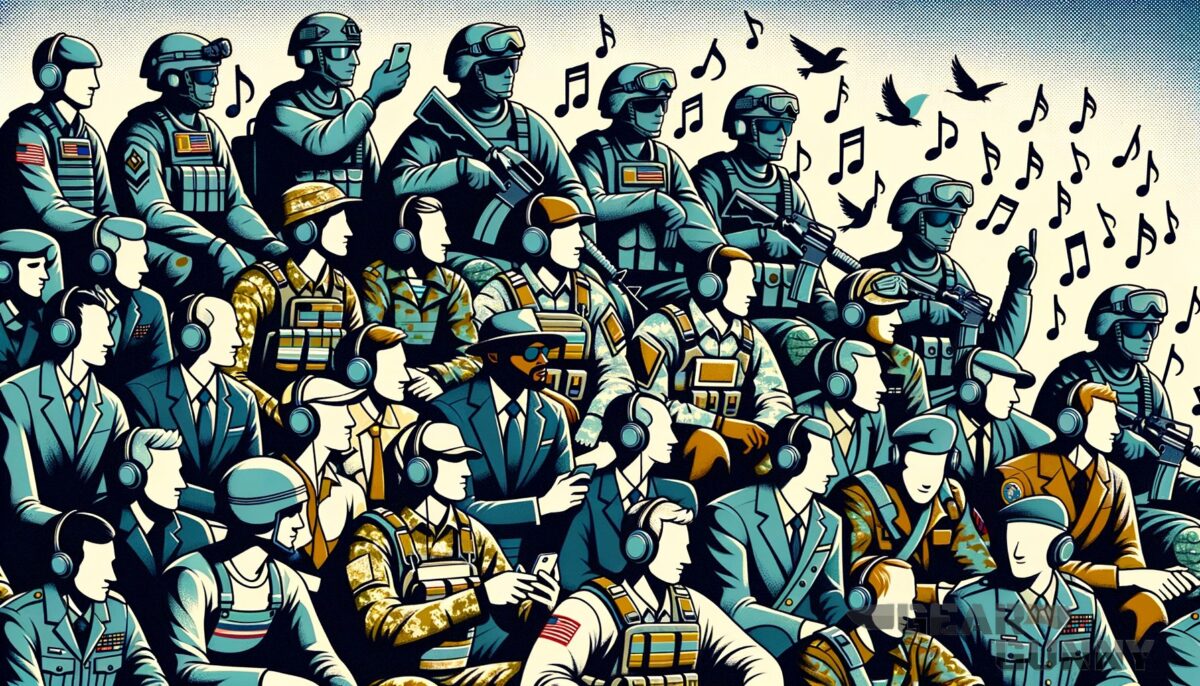
What does “BOLO” mean when you’re downrange or leafing through after-action reports? Whether you’re a seasoned vet or just a tactics buff, these acronyms can be as tricky as finding the right plate carrier for your mission. Stick around, and we’ll decode this military term together.
Key takeaways
- BOLO stands for “Be On the LookOut”, a crucial alert in military and law enforcement.
- Military communication like BOLO enhances situational awareness and teamwork.
- Effectively responding to a BOLO requires clear and encrypted communication channels.
What does BOLO mean in military operations?
BOLO stands for “Be On the LookOut.” It’s a type of alert issued within military and law enforcement circles when they want personnel to keep an eye out for something specific—usually a person, vehicle, or item of interest considered vital for the mission’s success.

- Key uses of BOLO include:
- Alerting units to watch for suspicious activity.
- Identifying potential threats or targets.
- Circulating descriptions of wanted people.
Military units might issue a BOLO to alert troops to a high-value individual that’s in the AO (Area of Operations). Let’s say there’s a known insurgent leader skulking around—command will put out a BOLO so everyone’s got their eyes peeled.
For further details on military tools and terms, check out the differences between a breach and a BFT in military tactics.
Frankly, I reckon there’s a fine line between what’s textbook and what goes down on the ground. See, in my non-expert boots-on-the-ground opinion, BOLO is more than just a buzzword—it’s a mindset. When that call comes over the radio, it means it’s game time, and every devil dog out there needs to perk up and lock in.
Remember that scene in “Black Hawk Down” where they’re all scanning the streets of Mogadishu, eyes sharp as a tactical knife? That’s BOLO in action—every grunt on edge, every gaze a trawl for the golden intel ticket. Sure, Hollywood gins it up some, but the fact is, a good look in the eyes tells you who’s been there when the BOLO call drops.
Definitely a real deal you gotta feel in your gut.

5.11 Rush 24 Tactical Backpack

5.11 Rush 24 Tactical Backpack
Understanding BOLO in military operations
BOLO, short for “Be On the LookOut,” is a phrase commanding immediate attention during operations. It signals personnel to search for specific people, assets, or pieces of intel crucial for mission fulfillment.
What triggers a BOLO alert?
In the throes of a military operation, a BOLO is triggered by actionable intelligence or observation of suspicious behavior. This alert mobilizes troops to be vigilant and primes them for potential engagement.

When a BOLO is issued, every marine must perk up and lock in. This not only signals immediate attention and action but primes every troop to be vigilant—turning every eye into a keen observer and every soldier into a focused participant in the collective security of the operation.
- A BOLO is usually issued when:
- There’s intel about a threat in the vicinity.
- A mission-critical item or person goes missing.
- Enemy movements are suspected or confirmed within an area.
Troops might be on the lookout for anything from enemy combatants to stolen vehicles or lost communication gear, making it critical for maintaining operational security.
How do soldiers respond to a BOLO?
Once a BOLO is issued, responding protocols kick in swiftly. Soldiers heighten their observational skills and communicate sightings using coded language or secured channels. Each unit has designated protocols to report and act upon BOLO information.
What are the challenges of BOLO?
Military operations are dense with variables, and BOLO alerts add another layer of complexity. Miscommunication, delayed intel, or environmental factors like terrain and weather can hinder the effectiveness of BOLO responses.
- Challenges include:
- Ensuring the accuracy of descriptions provided in the BOLO.
- Avoiding false positives or misidentification.
- Swiftly disseminating the BOLO to all relevant parties.
For a soldier, being attuned to the pulse of the battlefield is non-negotiable, whether it’s squaring away your tactical gear or scanning a ridge line after a BOLO call.
Placing BOLO in a broader military context
Understanding the term BOLO is essential, but it’s one piece of a larger mosaic that includes other terms and devices intricate to military operations.
How does BOLO fit with other communication protocols?
BOLO is one of many communication tools used in the field. It works alongside other code words and tech, such as the Blue Force Tracker, enhancing situational awareness and mission coordination.
What other terms and phrases are related to BOLO?
Just like a sturdy plate carrier fits into a soldier’s full kit, BOLO slots into a linguistic arsenal that features terms like “ROE” (Rules of Engagement), “Oscar Mike” (On the Move), and “FUBAR” (Fouled Up Beyond All Recognition).
Each term or phrase has a specific function, either as a descriptor, an order, or a status report. These terminologies, when combined, form the complex language that ensures precision and clarity in military communication.
Given that there’s no specific data to create a table from the provided <information>, we’ll assume that the requested table should reflect general aspects of military communication protocols, including BOLO.
Military communication protocols at a glance
This table summarizes various military communication protocols, showing how BOLO integrates into a system designed for optimal information sharing and operational efficiency.
| Protocol Type | Description | Example |
|---|---|---|
| Alert | Signals immediate attention and action | BOLO |
| Status Report | Provides updates on current situation or operation | SITREP |
| Order | Communication intended to direct or instruct | FRAGO |
| Identification | Confirmation of friend or foe | IFF |
| Coordination | Organizing and adding efforts across units | Blue Force Tracker |
Military communication not only relays direct messages but also ensures the proper identification of allies to prevent friendly fire and optimize coordination of maneuvers and strategies.
Authentication and clarifying terms
Military communication not only relays direct messages but also ensures the proper identification of allies to prevent friendly fire and optimize coordination of maneuvers and strategies.
Authentication and clarifying terms
Military communication not only relays direct messages but also ensures the proper identification of allies to prevent friendly fire and optimize coordination of maneuvers and strategies.
This table is a simplified look at the types of protocols and systems that ensure effective and secure communication in military operations.
More military observation tips
Maintaining a vigilant stance is vital when a BOLO is active. Here are some more measures that can bolster your observational capabilities.
- Maintain regular communication with your unit to stay updated.
- Utilize all available surveillance equipment effectively.
- Regularly check and compare notes with your comrades to ensure nothing slips past.
- Engage in continuous training to sharpen identification and observational skills.
- Stay updated on the latest tactical gear that can aid in surveillance and reconnaissance.
When it comes to the dos and don’ts of executing a successful BOLO operation, here’s a table to keep things straight:
| Do | Don’t |
|---|---|
| Confirm the details of the BOLO alert. | Spread unverified information. |
| Update your unit with any developments. | Neglect proper communication channels. |
| Use secure comms to discuss the BOLO. | Discuss sensitive details on insecure lines. |
| Remain alert and vigilant at all times. | Let your guard down or become complacent. |
| Follow chain of command for any actions. | Act on your own without proper authorization. |

Advantages and disadvantages of BOLO operations
The implementation of a BOLO can have a significant impact on the outcome of military operations. Let’s explore the pros and cons.
Advantages
- Quick dissemination of critical information: BOLOs can rapidly alert personnel to emerging threats or items of interest.
- Enhances situational awareness: Constant vigilance primes troops to react quickly to visual or intelligence cues.
- Promotes teamwork and cohesion: A shared objective to locate the subject of a BOLO can create a unified effort across units.
- Can aid in the prevention of friendly fire: Properly executed BOLO alerts help clarify who or what to look for, reducing the risk of misidentification.
Disadvantages
- The potential for misinformation spread: If details are incorrect or outdated, it can lead to confusion and wasted resources.
- May lead to tunnel vision: Fixating on a BOLO may cause personnel to miss other crucial details in their environment.
- Increased stress: The heightened state of awareness required can lead to increased fatigue or anxiety amongst troops.
- Resource allocation: A significant amount of focus and resources may be dedicated to a BOLO, which might detract from other mission-critical tasks.
If you are a visual learner, check out this video titled ‘Dan Fulgham Operation Bolo’
Frequently asked questions (FAQ)
What happens if a BOLO is mistakenly issued?
If a BOLO is mistakenly issued, it is quickly retracted with clear communication to avoid any confusion on the ground. The chain of command typically follows up with updated information to reorient the troops’ focus and ensure that everyone is back on target with the current operational priorities.
Can civilians use the term BOLO?
Yes, the term BOLO is commonly used by civilians in law enforcement and public safety. It’s become a staple in alerting officers and the public to be on the lookout for persons of interest or missing people, adapting seamlessly from military to civilian usage.
How are BOLOs communicated during covert operations?
During covert operations, BOLOs are communicated discreetly using secure channels and coded language to prevent the information from being intercepted by unintended parties. Operators use a range of covert communication tactics to ensure the BOLO reaches only those who need to know.
Final thoughts
In conclusion, a BOLO alert is more than just an acronym; it’s a vital operational directive that ensures all eyes are attuned to a mission-critical element. Understanding its use and impact can mean the difference between success and failure in operations both military and civil. In the dynamic world of tactical operations, staying on point and ready to act on a BOLO can define the effectiveness of a unit’s response.
How has your experience lined up with the concept of BOLO, either in service or in tactical simulations like airsoft? Did I cover everything you wanted to know? Let me know in the comments section below I read and reply to every comment.
If you found this article helpful, share it with a friend, and check out my full blog for more tips and tricks on military tactics and equipment. Thanks for reading, and stay sharp out there!















